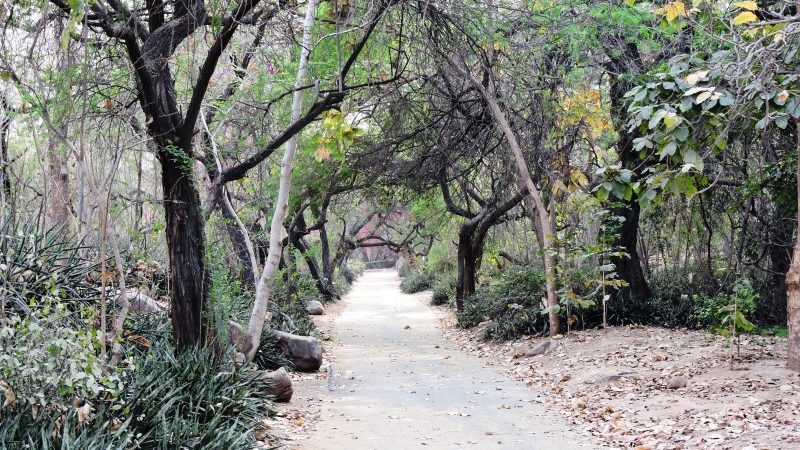Surviving Eviction in Bawana JJ Colony: Presentation of Research Findings by Jagori
 JAGORI – a women’s training, documentation, communication and resource centre invites concerned citizens to attend a presentation of their research findings titled:
JAGORI – a women’s training, documentation, communication and resource centre invites concerned citizens to attend a presentation of their research findings titled:
“Swept off the Map: Surviving Eviction and Resettlement in Bawana JJ Colony”
The study is an intensive two-year long exercise of
collecting quantitative and qualitative data from around 3000 families who have been forcibly resettled in this location on the North-Western outskirts of the city.
The research provides the “hard” evidence needed to back up the contention of activists and community groups, that the evictions and forced relocation to Bawana have shattered people’s lives and destroyed their livelihoods.

The JAGORI Research Project is a unique effort to track the way in which the process of eviction and resettlement has literally pushed about 5000 families at least 25,000 women, men and children – off the map of the city, rendering them invisible to policy-makers and the public alike, allowing the State to wash its hands of any responsibility for securing their rights or even ensuring their survival.
Date: Friday, 13th July
Time: 2 PM
Venue: India International Center (IIC) Annexe
Those interested can confirm their participation at the earliest at the following email address: jagori@jagori.org
For more information, please contact:
Kalpana Viswanath & Kalyani Menon-Sen
JAGORI
B-114 Shivalik, Malviya Nagar
New Delhi 110017 INDIA
Website: http://www.jagori.org
Phones +91 11 2669 1219, 2669 1220
Fax: +91 11 2669 1221
Helpline +91 11 2669 2700




This reply is too late considering the queries were made in 2007! However, the answers should be know to people who are interested to know. I am no authority on urban politics in India but I have worked in the sector of eviction and resettlement in Delhi and think that I can present my views from my experience of working in the field.
To answer your questions Vineeta and Matt we need to go back to a more important question. Why were slums created in the first place? This happened because when people in search of better living opportunities moved to the cities it was completely ignored by the state that they might be poor and were in need of low-cost housing. Hence, lack of any form of housing for them forced the urban poor to settle down on vacant-public land which was close to their work site. This phenomenon of poor settling at such sites remained unquestioned till a long period of time till the advent of economic liberalization. Globalization brought with itself the idea of a world class city for the consumer-citizens (people who work in corporates, pay their taxes and live a clean hygienic life). Though eviction is not a recent phenomenon and can be traced back to the time of emergency when the residents of Turkman Gate were first evicted and resettlement; there is a difference between the resettlements which took place before the 1990’s and after. They differed in a). The frequency at which the evictions took place. The rapidity shown by the state in taking action in the “public interest” was astonishing especially after 2003. Between 1990 and 2003, 51,461 houses were demolished in Delhi under “slum clearance” schemes. Between 2004 and 2007 alone, however, at least 45,000 homes were demolished, and since the beginning of 2007, eviction notices have been served on at least three other large settlements.b). the basic services that were provided in the resettlement colonies. It was decided that poor do not deserve good water and sanitation facilities and should hence be kept deprived from those (supply of water in these resettlelemnt site remains as low as 30lpcd) and c) The reduced size of plots which has now come down to 12.5 sq yards (the size of most ‘A’ grade coloies’ bathrooms!) and the strict tenure system which was introduced to make sure that the poor dont become permanent residents of the new ‘world class’ city.
And so coming back to answer the original question; evictions took place because the slums were not a pretty site for the global investors and had to get done away with to make spaces for things which were in the larger “public interest”. So parks and temples like Akshardham or even keeping the evicted sites vacated after the brutal demolitions was of much more importance than building low cost houses or govt schools or even hospitals! What is worse, the savior of our rights The Supreme Court of India was the one who attached the ‘moral’ connotations of ‘hygine’, ‘true tax paying citizens’ with the definition of citizens! And hence in India we have two seperate categories of ‘citizens’ and ‘denizens’.
http://www.elaw.org/node/1420
http://eau.sagepub.com/content/21/1/127.refs
any information on what happened at the seminar??
Thanks Govind.
Will be keeping in touch on your very good work over there in Delhi.
Hey matt…interesting blog there. nice thing u came up with!
And im not in the city from tomorrow..so wont be able to update about th above mentioned presentation. But wud write..as and when I hear about it.
Yes, I’d like to know of the reasons behind the evictions too.
Matt (The Coffee House)
P.S. I’ve just started another blog called ‘Environment Solutions’ which maybe of interest; http://environmentsolutions.wordpress.com/
🙂
why were these people resettled? was it due to the power plant being setup?